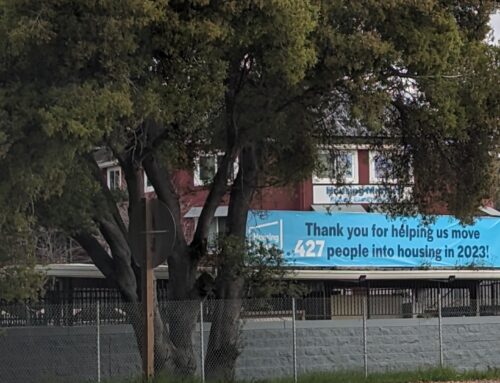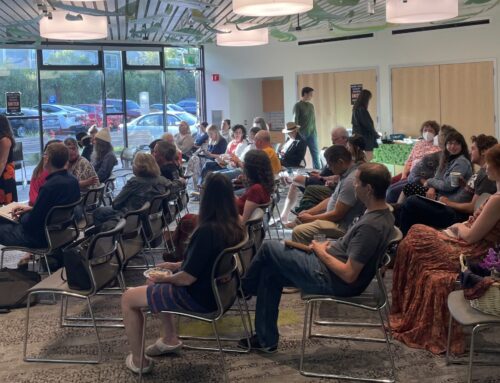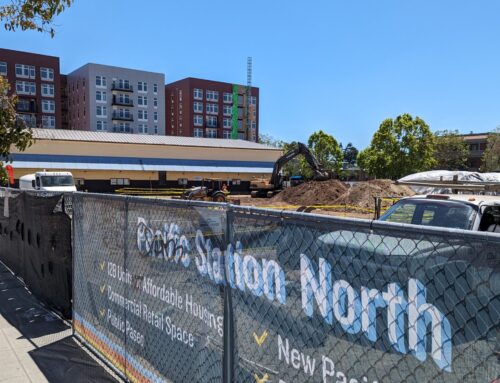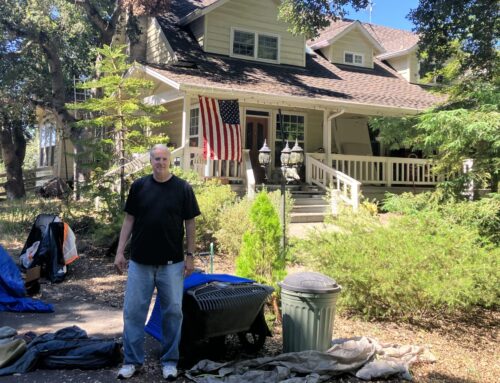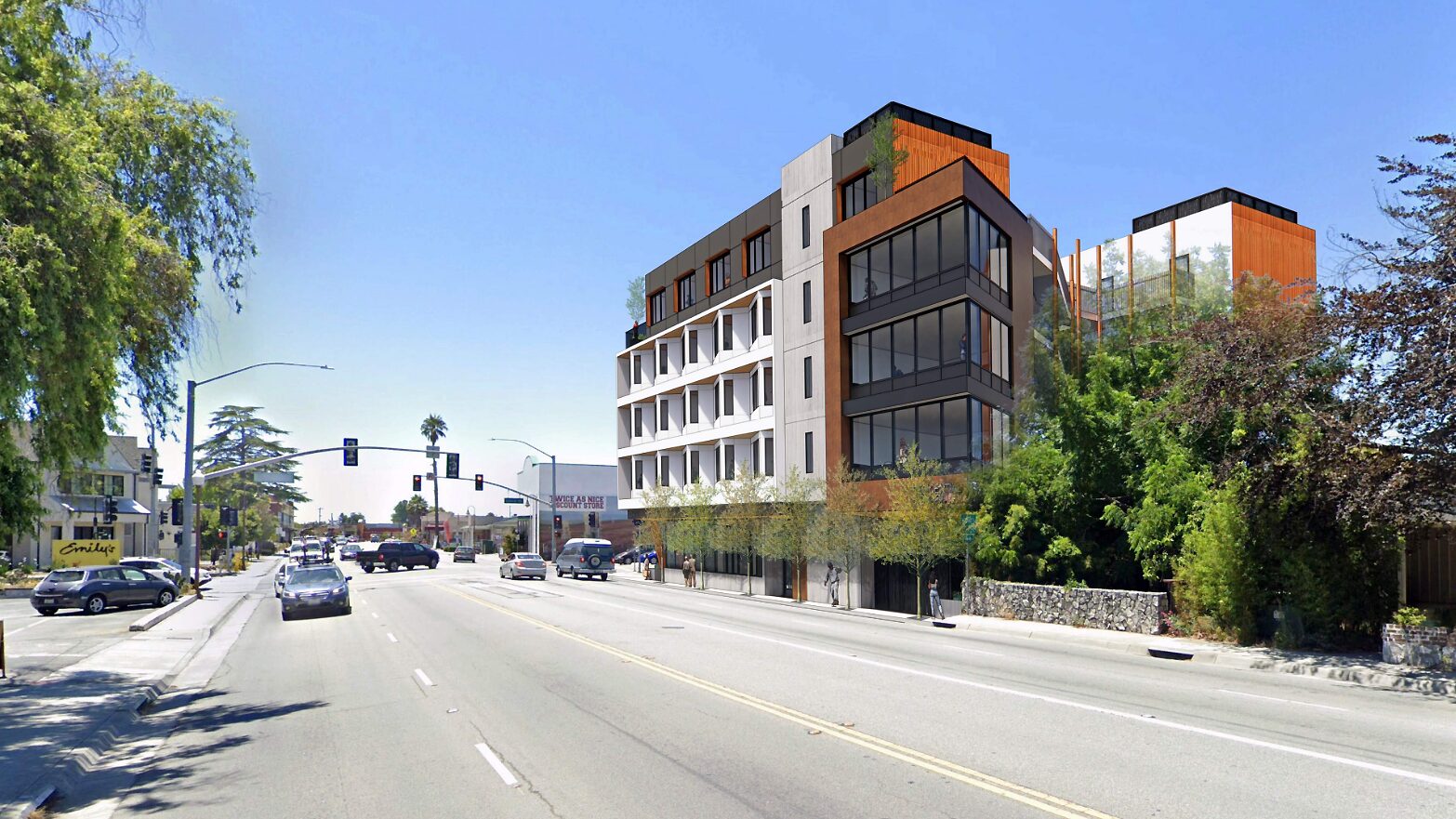
The Santa Cruz City Council on Tuesday approved a five-story housing project at the Food Bin at 1130 Mission St. (Workbench)
SANTA CRUZ >> The Santa Cruz City Council on Tuesday unanimously approved a 48-unit housing project at the Food Bin at 1130 Mission St., and it was left unanswered whether 11 more ADUs would be built from storage units on the site.
The council did not approve the 11 accessory dwelling units, but the developer said state law allowed them to be converted. The Santa Cruz city attorney did not immediately respond to a request for comment.
Wednesday, Workbench founding partner Jamileh Cannon wrote in an email that “Workbench and [Food Bin co-owner Doug Wallace] do not intend to pursue a 48-unit project without the storage/ADUs.” Cannon said they are “working through the options and deciding on the next best course of action.”
Various council members expressed confusion at the reclassification of units as storage spaces, and they also showed disapproval with errors and last-minute changes made by Santa Cruz-based developer Workbench throughout the process.
“I felt like the processes were disappointing. The approach was disappointing,” said Santa Cruz City Councilmember Martine Watkins. “The storage approach felt obviously disingenuous to me.”
In April, Workbench submitted revised plans for a 59-unit development in which 11 of the 59 units were re-classified by the developer as “storage spaces” which would be later turned into ADUs. This would have allowed the developers to use the smaller unit count to qualify for waivers needed for the project while enabling them to add 11 units later by converting the storage spaces.
“We can’t legally call them ADUs during entitlement, but we are legally allowed to turn them into ADUs,” Cannon said during the meeting. “This is a way to achieve the same building we were originally working on entitling, just using a different code path.”
The council approved a motion to “grant the requested waivers for height and [floor-area ratio], but only to the extent necessary to construct a 48-unit project that does not include the 11 units on the west side of the project.”
The proposal is in District 4, represented by Santa Cruz City Councilmember Scott Newsome. Newsome said, “This is an application for 48 units, and particularly for 33 base units and the 15 additional density bonus units the applicant requested and as a right to under state density bonus law at the time of the application.”
Newsome said the motion brought the application into compliance with the state density bonus law.
Santa Cruz City Councilmember Sandy Brown rejected the idea that the application process had been unnecessarily extended by community opposition.
“Much of this delay came because the developers submitted false information, false calculations, whether intended or not,” Brown said. “It’s kind of disappointing to me as well that our planning staff did not catch that, that our planning commission did not catch that and here we are, not because of the resistance to a project, but because of the pushback on trying to get more than legally you get by right under the density bonus law,” said Brown.
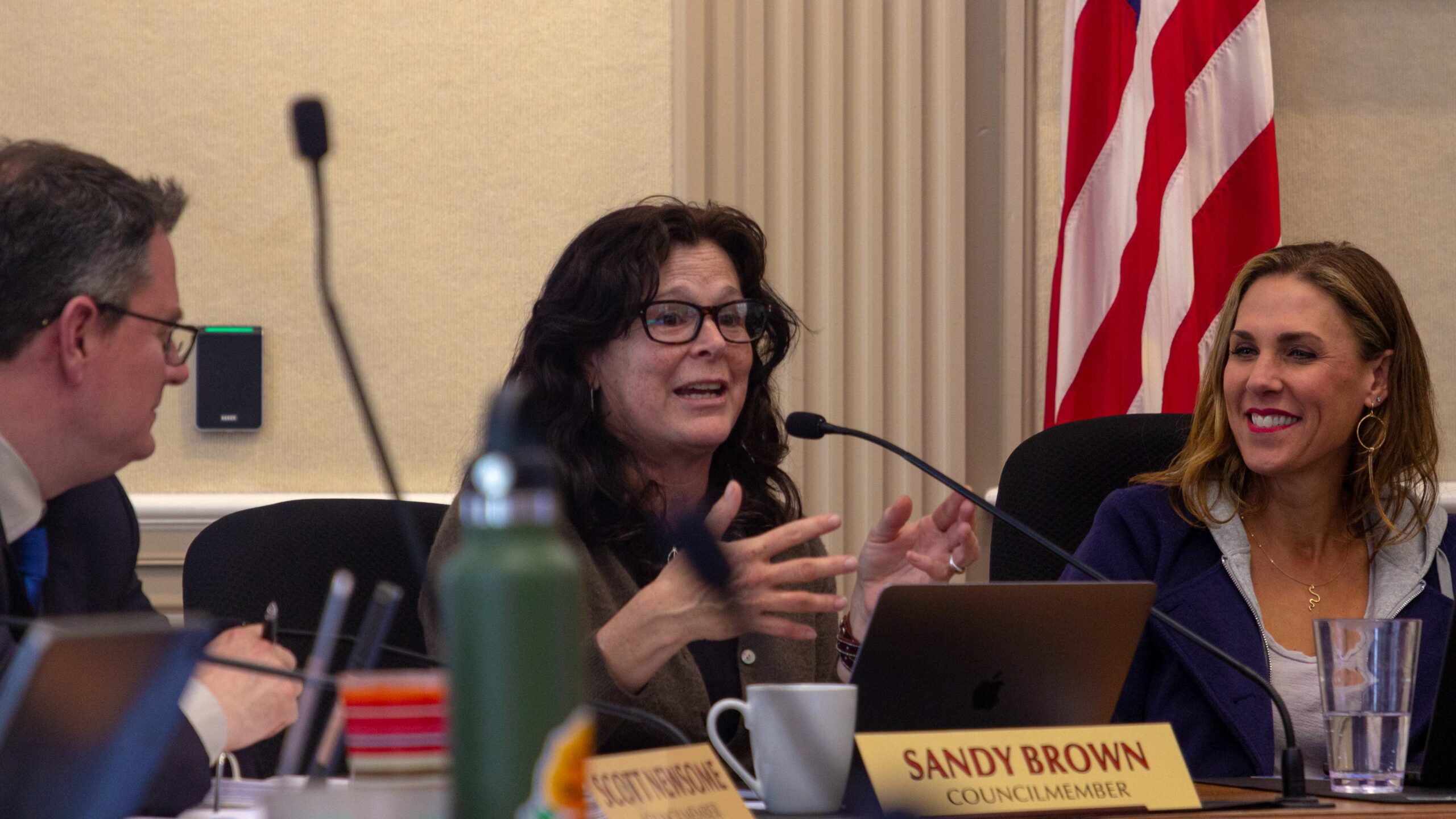
From left, Santa Cruz City Councilmembers Scott Newsome, Sandy Brown and Martine Watkins voted with the rest of the council to approve a 48-unit housing project at the Food Bin. They are pictured in a May 14 meeting. (Marcello Hutchinson-Trujillo — Santa Cruz Local file)
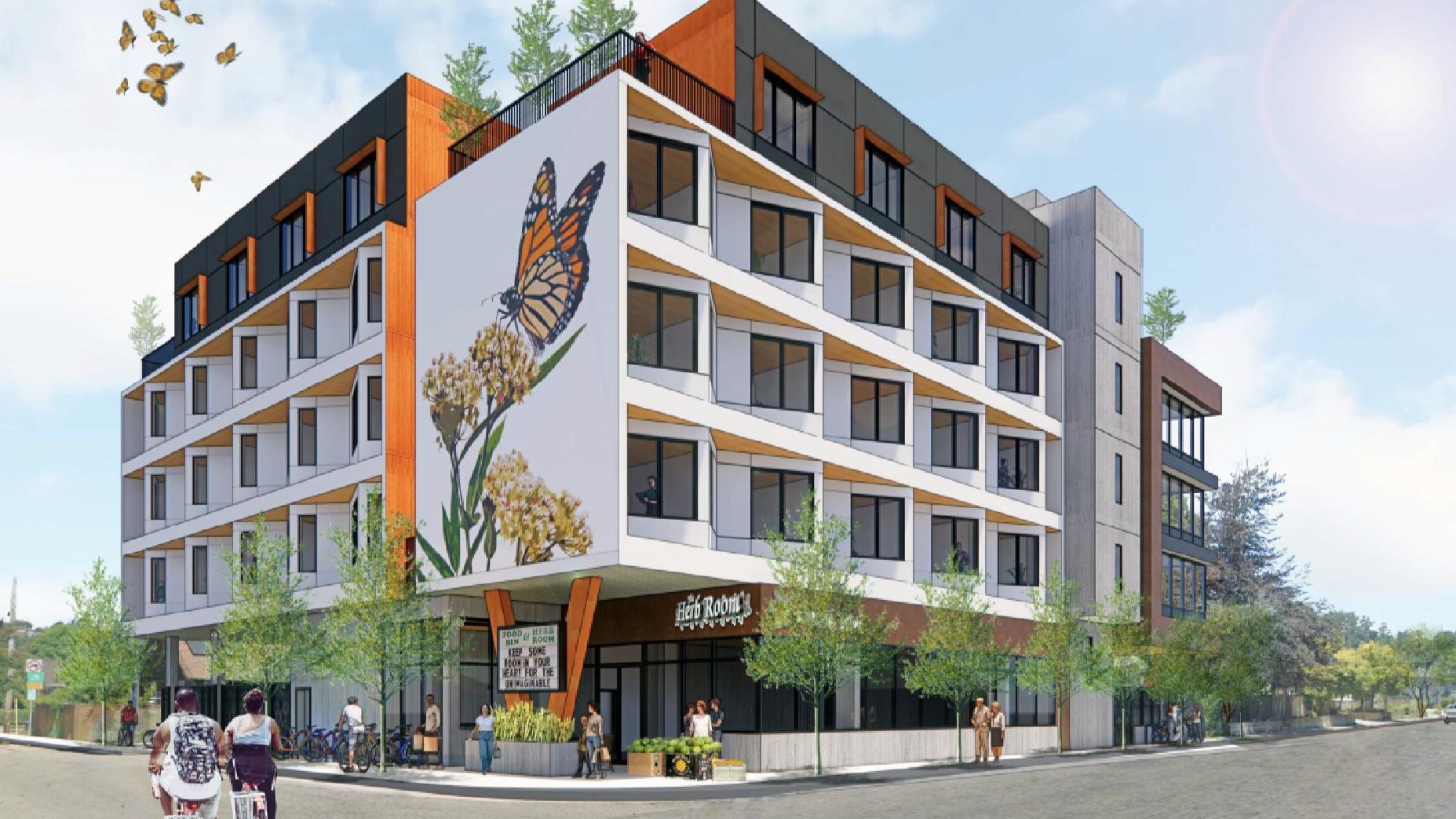
The Food Bin and Herb Room would reopen on the ground floor of a five-story housing complex at Mission and Laurel streets in Santa Cruz. (Workbench)
Neighbors’ appeals denied
The city council denied two appeals at Tuesday’s meeting, including one by Ian and Natasha Guy that focused on aesthetic and traffic impacts and another by Laurel and Cleveland Area Neighbors that criticized a CEQA exemption to the project. The Laurel and Cleveland Area Neighbors suggested an alternative development size which the council eventually adopted.
Ian Guy argued to council that AB 2097, the law granting developers an exemption from including parking if the development is located within a half mile of a “major transit stop,” that the development did not qualify based on an analysis of traffic stops in the area. Staff disagreed with Guy’s interpretation.
James Miller of Laurel and Cleveland Neighbors argued that the developers had not been acting in good faith in the development proposal process. His group caught mistakes in the proposal that planning staff missed, leading to later revisions by the developer.
The appellants also highlighted that the site was previously a gas station in the state Water Board’s database, which would typically disqualify a project for a CEQA exemption. City planning staff said they had considered this and given the site’s designation as a “low threat closure”, set the concern aside after review with Environmental Health.
Miller summed up the feeling of the appellants by asking the council to approve a 50-unit building of four stores as a compromise.
“We want to send a clear message that says no, in Santa Cruz, follow the rules, submit clear plans, and we’ll get them approved and get your building built. For the longevity of our community, we need to have equal application of the law so it’s clear and everybody knows what they’re getting,” Miller said to the council.
Supporters and opponents of the project weighed in during the public comment period, with opponents warning about the impacts on parking and the erosion of local control and supporters highlighting the appealing size of the rooms, desirable location and proximity to UC Santa Cruz.
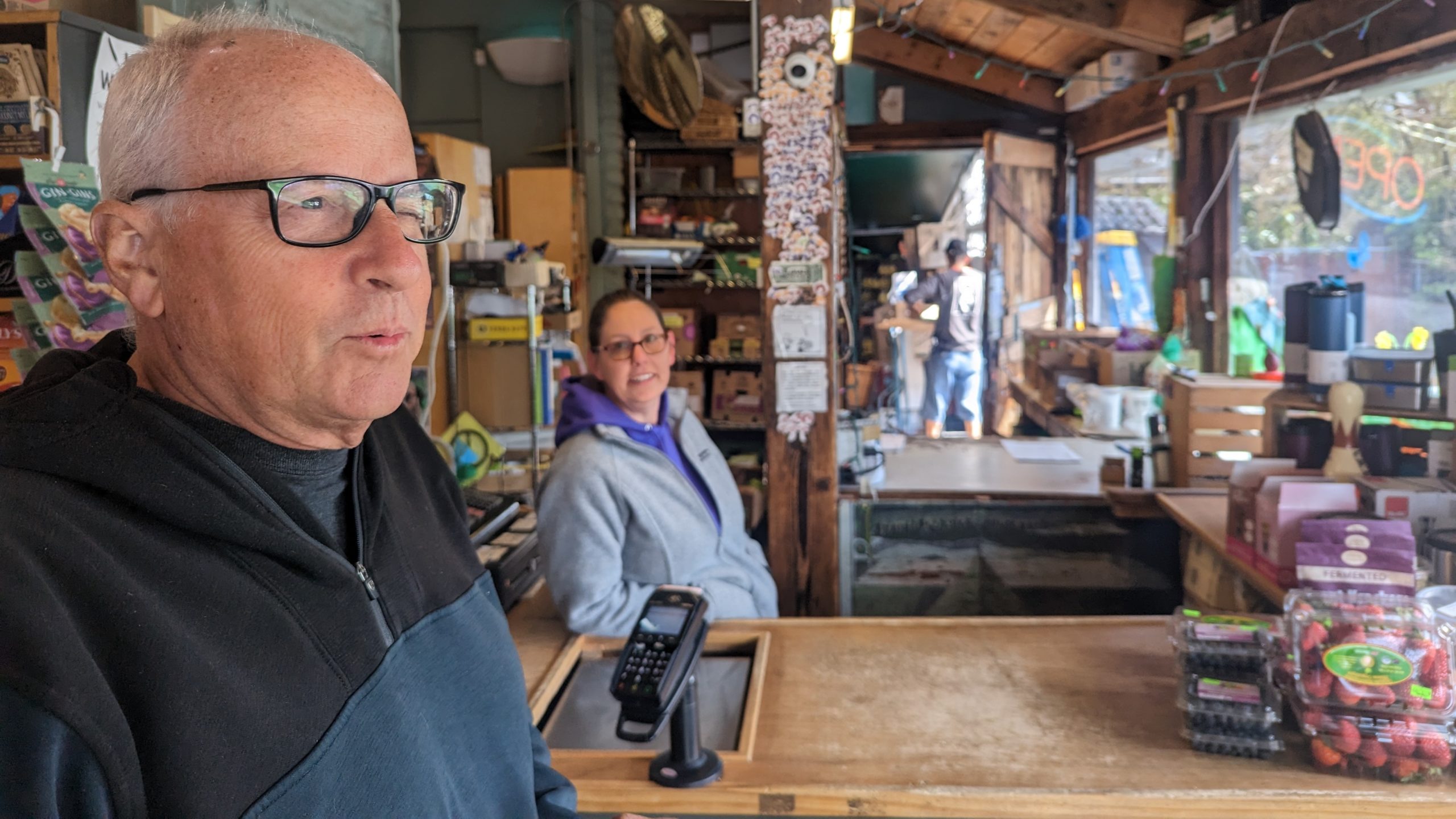
Food Bin and Herb Room co-owner Doug Wallace, left, said the property at Mission and Laurel streets could be redeveloped with a new space for his stores and housing in a five-story complex. (Tyler Maldonado — Santa Cruz Local file)
Community weighs in
First-year UCSC student Alex Santiago supported the project and countered claims that there wasn’t enough nearby public transit to justify the project.
“Those dissenters of affordable housing and more housing in Santa Cruz rather stand up and support public transit,” said Santiago.
Twelve year old Gavin Roth also emphasized this need to the council.“It is possible to live without a car. We should plan for that. We should account for that,” Roth said.
Some said UCSC should provide more student housing. Others expressed dissatisfaction at the erosion of local control over housing policy by state laws.
Resident Kenny Hines said that the state’s Regional Housing Needs Allocation “has been twisted into a profit making tool for corporate developers.”
Neighbor to be paid $10,000 for blocked solar panels
Behind a simple but sturdy wooden gate one house to the north of the proposed development, a creek runs through the middle of Doug Martine’s vegetation-heavy property, which features in the Laurel Street Neighbors’ appeal. A large tree pokes up at the sky from a corner of his yard, from which he said he and his kids could see most of Santa Cruz and surrounding communities.
“You know, you have this in the middle of a city. It’s kind of neat,” said Martine, 75.
Martine didn’t speak at public comment, but his appeals against the environmental and nostalgic impacts of development were represented.
At the planning commission meeting on May 16, the owner of the Food Bin property agreed to compensate Martin $10,000 for the loss of sunlight to his solar panels. But he said his opposition is motivated more by the threat to the ecosystem in his backyard than any financial loss from the partially-blocked panels.
“It’s a healthy ecosystem,” said Martine. “If you run up 65 feet right there — actually, it’s going to be over 65 feet — that’s going to block all the sun. And when you block the sun, you get dead vegetation.”
Martine said he owns cottages neighboring the development to the east that may see deteriorating conditions if the afternoon sun is partially blocked. “There’s our cottages over there and there’s going to be black mold in there. It can’t help if you take the sun away in a damp environment. And that’s a health issue.”
According to the California Health and Safety Code, it’s the landlord’s responsibility to fix problems with mold or dampness.
Read more
- Planning commission approves Food Bin housing project in Santa Cruz — Jan. 29, 2024
- Food Bin owners explain Santa Cruz housing proposal — April 21, 2023
- Santa Cruz Local Housing and Construction page: 1130 Mission St., Food Bin redevelopment
Questions or comments? Email [email protected]. Santa Cruz Local is funded by members, major donors, sponsors and grants for the general support of our newsroom. Our news judgments are made independently and not on the basis of donor support. Learn more about Santa Cruz Local and how it is funded.
Tyler Maldonado holds a degree in English from the University of California, Berkeley. He writes about housing, homelessness and the environment. He lives in Santa Cruz County.



